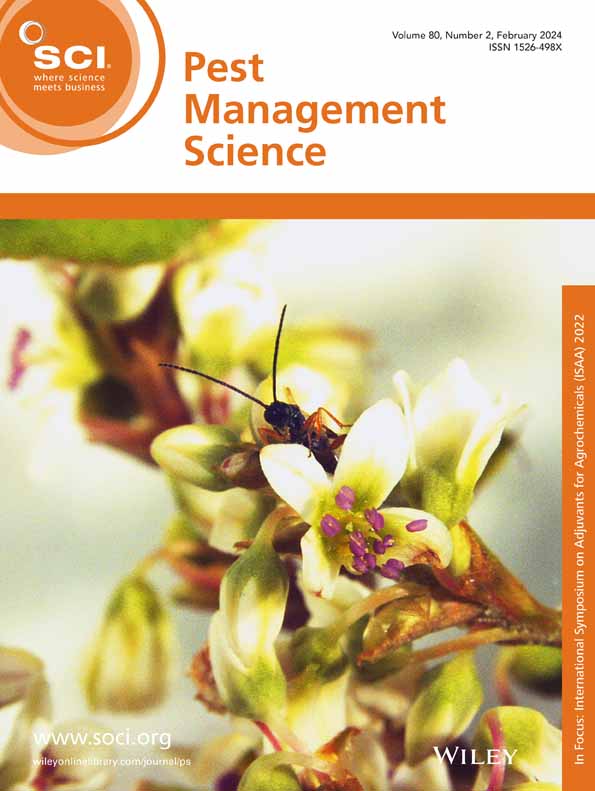建立基于crispr技术快速检测美洲沼草(Beckmannia syzigachne)对皮诺沙登抗性的系统。
IF 3.8
1区 农林科学
Q1 AGRONOMY
引用次数: 0
摘要
抗除草剂杂草对作物生产构成重大挑战,因此早期抗药监测对于及时控制抗除草剂杂草至关重要。长期使用抑制accase的除草剂,如pinoxaden,导致杂草种群随着时间的推移进化出高水平的抗性。美国烂泥草(Beckmannia syzigachne)是一种有害的杂草,严重影响小麦和油菜籽作物的产量和质量。结果为了准确、快速检测syzigachne双歧杆菌靶基因突变,我们建立了一种基于CRISPR-Cas12b/sgRNA系统的新型快速检测方法,用于评估ACCase基因1781号氨基酸位置的靶突变。通过优化各种反应条件,该检测系统可在54℃恒温条件下,在40 min内测定syzigachne对皮诺沙登的靶位抗性。该系统具有特异性好、灵敏度高、操作简便、高效、高通量等特点。结论本研究提出了一种基于CRISPR-Cas12b系统的快速检测靶点抗性的有效方法,为抗性杂草的精准管理提供了便利。©2025化学工业协会。本文章由计算机程序翻译,如有差异,请以英文原文为准。
Establishment of a CRISPR-based system for rapidly detecting the target-site resistance of American sloughgrass (Beckmannia syzigachne) to Pinoxaden.
BACKGROUND
Weeds resistant to herbicides pose significant challenges in crop production, making early resistance monitoring crucial for timely control of resistant weeds. Prolonged use of ACCase-inhibiting herbicides, like pinoxaden, has led to the evolution of high-level resistance in weed populations over time. American sloughgrass (Beckmannia syzigachne), is a noxious grass weed, that severely impacts the yield and quality of wheat and rapeseed crops.
RESULTS
To accurately and rapidly detect the mutations in the target gene of B. syzigachne, we developed a novel rapid detection method based on the CRISPR-Cas12b/sgRNA system to evaluate the target mutation at amino acid position 1781 of the ACCase gene. By optimizing various reaction conditions, the novel detection system can assess target-site resistance of B. syzigachne to pinoxaden within 40 min at a constant temperature of 54 °C. This novel system exhibits excellent specificity, high sensitivity, simplicity in procedure, also with time-efficient and high throughput.
CONCLUSION
This study presents an efficient method based on the CRISPR-Cas12b system for rapidly detecting the target-site resistance, which will facilitate the precise management of resistant weeds. © 2025 Society of Chemical Industry.
求助全文
通过发布文献求助,成功后即可免费获取论文全文。
去求助
来源期刊

Pest Management Science
农林科学-昆虫学
CiteScore
7.90
自引率
9.80%
发文量
553
审稿时长
4.8 months
期刊介绍:
Pest Management Science is the international journal of research and development in crop protection and pest control. Since its launch in 1970, the journal has become the premier forum for papers on the discovery, application, and impact on the environment of products and strategies designed for pest management.
Published for SCI by John Wiley & Sons Ltd.
 求助内容:
求助内容: 应助结果提醒方式:
应助结果提醒方式:


